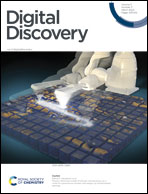Retro-BLEU: quantifying chemical plausibility of retrosynthesis routes through reaction template sequence analysis†‡
Abstract
Computer-assisted methods have emerged as valuable tools for retrosynthesis analysis. However, quantifying the plausibility of generated retrosynthesis routes remains a challenging task. We introduce Retro-BLEU, a statistical metric adapted from the well-established BLEU score in machine translation, to evaluate the plausibility of retrosynthesis routes based on reaction template sequences analysis. We demonstrate the effectiveness of Retro-BLEU by applying it to a diverse set of retrosynthesis routes generated by state-of-the-art algorithms and compare the performance with other evaluation metrics. The results show that Retro-BLEU is capable of differentiating between plausible and implausible routes. Furthermore, we provide insights into the strengths and weaknesses of Retro-BLEU, paving the way for future developments and improvements in this field.



 Please wait while we load your content...
Please wait while we load your content...